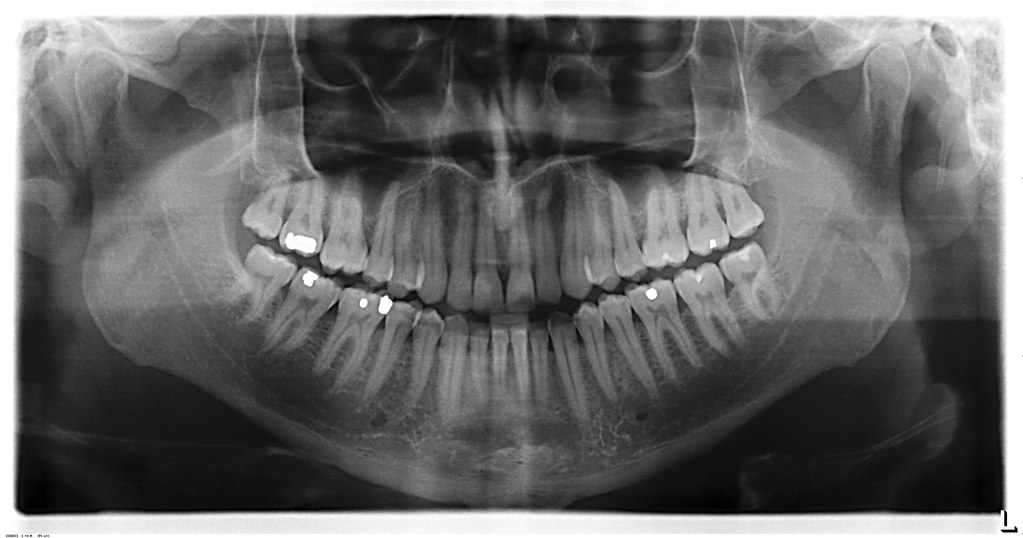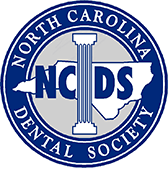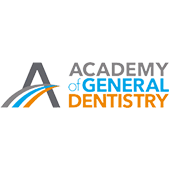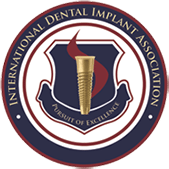
Dental X-rays (also known as dental radiographs) are a common and important diagnostic tool dentists use to detect oral health issues. However, since they useionizing radiation to create an image of the teeth and surrounding structures, many people are concerned about their safety and the potential risk of radiation exposure.
In this blog, Dr. Taj Haynes, your#1 Charlotte, NC dentist, explores dental X-rays’ safety, importance, benefits, and measures we take to minimize potential risks.
What Are Dental X-Rays?
Your dentist typically examines your mouth during a routine dental exam to determine the health of your teeth and gums. However, despite their skills at detecting dental issues, your dentist cannot spot all your dental problems as some are not visible to the naked eye. This is where dental X-rays come in handy.
Dental X-rays are a type of radiograph that uses radiation to create detailed images of the teeth, gums, jawbone, and surrounding tissues. These images help your dentist to diagnose and treat various dental conditions such ascavities,gum disease,cracked or impacted teeth, andoral cancers.
How Do Dental X-Rays Work?
Dental X-rays use electromagnetic radiation to capture images of your mouth tissues. During a dental X-ray procedure, your dentist directs a small amount of radiation from a dental X-ray machine to the area being examined. This radiation beam passes through your soft tissues onto a sensor or film on the other side, creating images of your teeth and bones.
Different body tissues absorb different amounts of radiation. That is why the resulting image shows variations in density, allowing the dentist to see details that might not be visible to the naked eye.
For example, when the X-ray beams pass through the mouth, the teeth and bones absorb more of the ray than the gums and soft tissues, making the teeth appear lighter on the final X-ray image. Areas of a tooth with infection and decay appear darker because they don’t absorb as much of the X-ray. This way, your dentist can detect problems like tooth decay, gum disease, and bone loss even when symptoms have yet to manifest.
Benefits of Dental X-Rays
Dental radiographs are a valuable non-invasive diagnostic tool that allows your dentists to detect the following problems:
- Dental cavities or decay, especially between teeth and beneath existing dental fillings
- Traumatic injuries such as fractured or broken teeth
- The proximity of teeth to sinuses and nerves
- The presence and location of wisdom or impacted teeth, dental abscesses, periodontal disease, and other infections
- The presence and location of tumors, cancerous tissues, and cysts
- The severity of gum disease and bone loss in the jaw
- Dental development issues like missing, crooked, or deformed teeth
Your dentist can also use dental X-rays to determine your eligibility fordental implants,Invisalign,dentures, and other procedures or track your healing after adental bone graftorroot canal therapy. This allows them to provide personalized treatment and ensure your oral health is in tip-top shape.
Radiation Exposure from Dental X-Rays (Are Dental X-Rays Safe?)
Comparison of Radiation Exposure from Dental X-Rays to Other Sources of Radiation
Like regular X-rays, dental X-rays use electromagnetic radiation to capture dental images. However,this radiationcan be harmful to people if they are exposed to high doses, raising concerns about dental X-ray exposure and safety.
Fortunately, the amount of radiation used in dental X-rays is relatively low and not enough to cause cancer, molecular damage, and other adverse effects. This is whydental X-rays are generally considered safe and really no worse than the amount of natural background radiation people receive from the environment.
To put things into perspective, here are some comparisons of the radiation exposure from dental X-rays to other sources of radiation:
Natural background radiation: People receive a certain amount of radiation from natural sources, such as cosmic rays, rocks, and soil. The average annual dose from natural background radiation is about3.1 millisieverts (mSv) per year in the United States. For example, a dental X-ray procedure can expose a patient to0.005 to 0.01 mSv of radiation, which is less than 1% of the annual dose from natural background radiation.
Airplane travel: People who fly frequently may receive more radiation from cosmic rays than those who do not. The level of radiation exposure during a flight depends on the flight’s altitude, duration, and latitude. For example, a flight from New York to Los Angeles can expose you to about0.03 mSv of radiation, which is about 3 to 6 times higher than the radiation exposure from a dental X-ray.
Medical imaging tests: Other medical imaging tests, such as CT scans, can expose patients to higher doses of radiation than dental X-rays. A single chest CT scan can expose you to about 7 mSv of radiation, which is much higher than a dental X-rays radiation exposure. However, it is important to note that CT scans are not routinely used for dental examinations.
Radiation therapy: Radiation therapy is used to treat cancer using high-energy radiation to destroy cancer cells. The radiation doses used in radiation therapy are much higher than those used in diagnostic imaging and can cause side effects such as fatigue, skin irritation, and hair loss.
Potential Risks of Dental X-Rays
Although dental X-rays are safe and cause no side effects in most patients, some patients may experience minor discomfort or irritation in the mouth due to the X-ray sensor or film positioning. In rare cases, patients may have an allergic reaction to the dental X-ray contrast material. This allergic reaction can cause symptoms such as itching, difficulty breathing, or hives.
How We Regulate Dental X-Rays to Ensure Safety
Although radiation exposure from dental X-rays is relatively low, we take precautions to reduce your exposure further and ensure your safety.
Our Concord and Charlotte, NC dentists only take X-rays when necessary for diagnosis and stay withinAmerican Dental Association recommended guidelines. We also use modern dental X-ray technology that uses much less radiation and ensures that you wear thyroid collars and lead aprons to protect your body from unnecessary radiation.
Achieve Optimal Oral Health with Our Dental X-Rays in Charlotte, NC
At Modern Family Dental Care, we want to keep your smile bright and ensure your oral health is in tip-top shape. That’s why we offerdental X-rays in Charlotte and Concord, NCto help identify potential oral health issues before they worsen and become oral health emergencies. By analyzing your teeth better than we can with the naked eye, our University, and Concord Millsdentists, Dr. Taj Haynes and Dr. Pernell Rogerscan provide personalized treatment to keep your teeth and smile healthy.
Schedule an appointment for a dental examination today, and let us spot and treat your dental issues before they have a chance to worsen.





